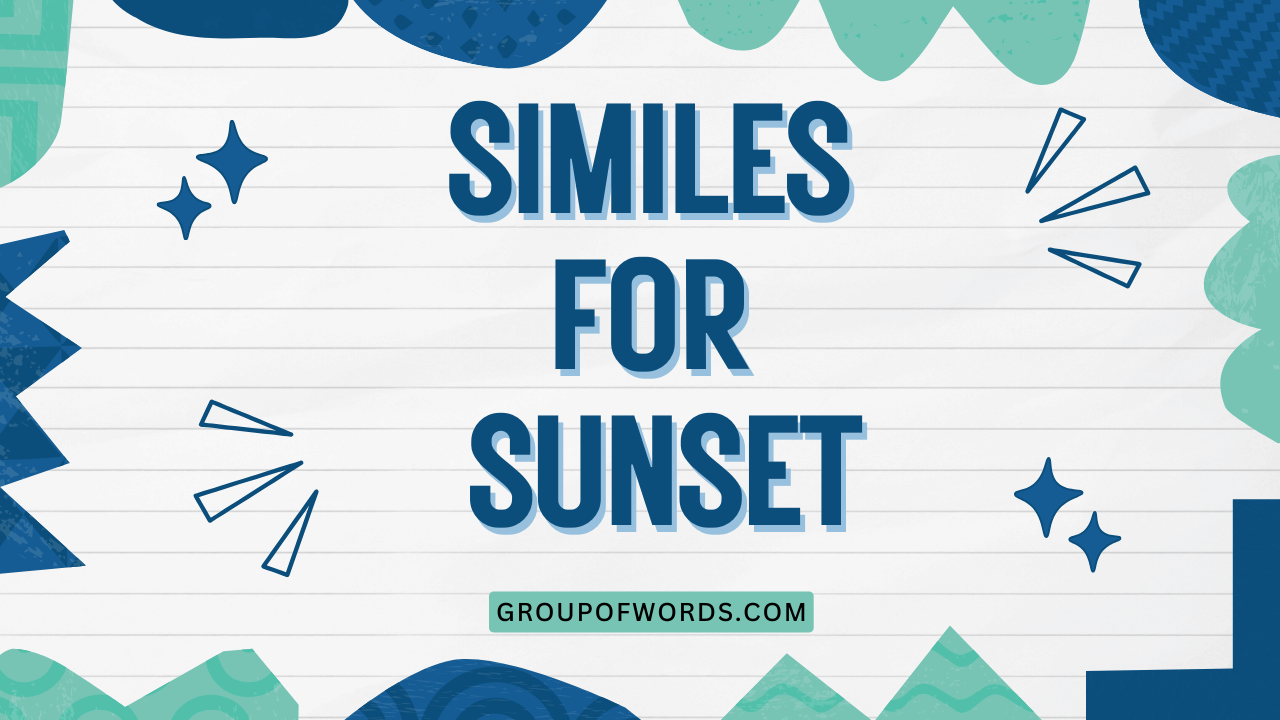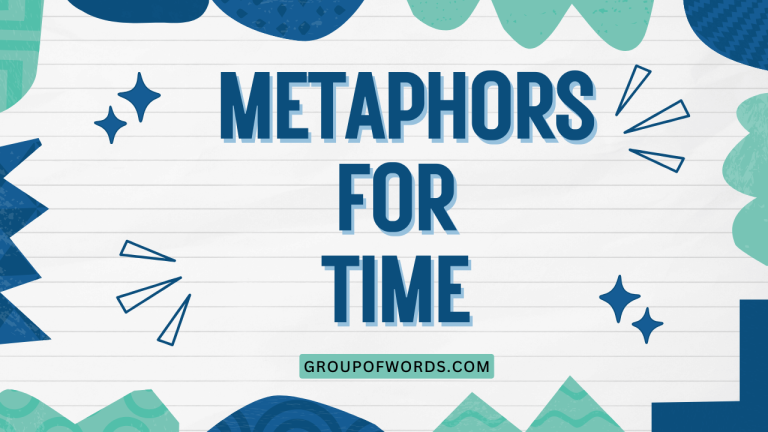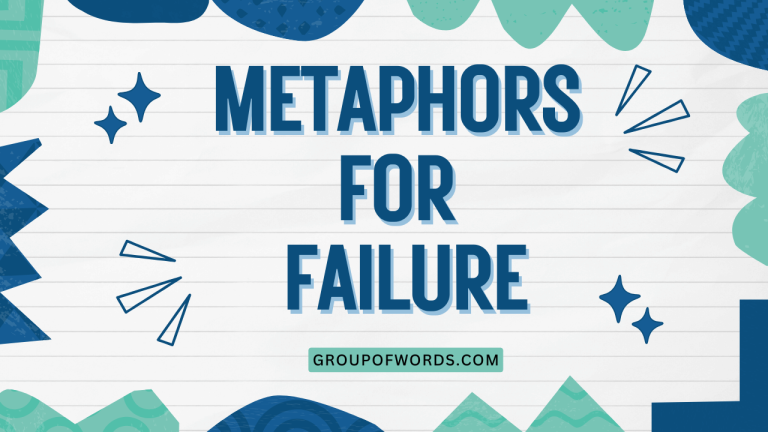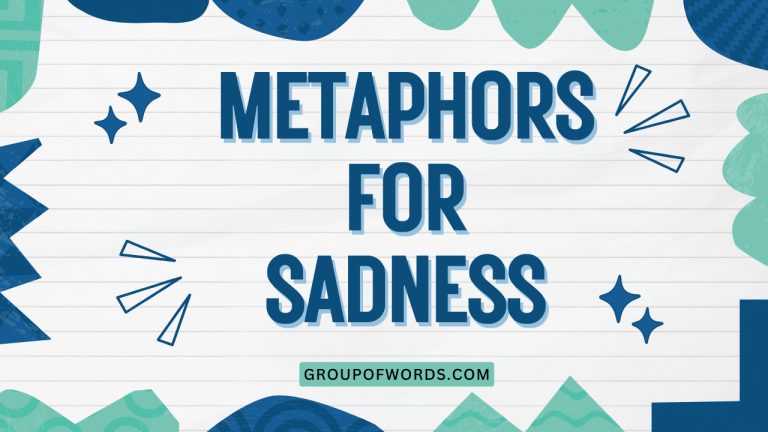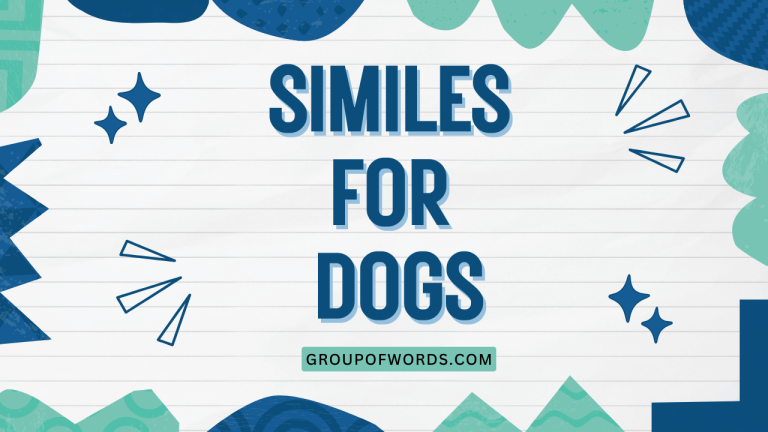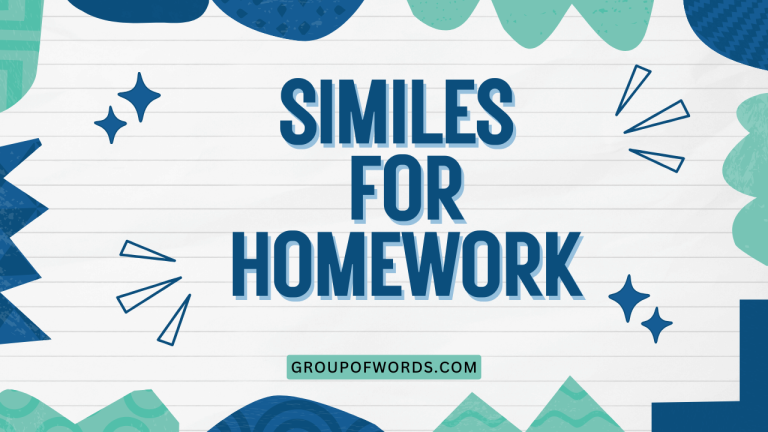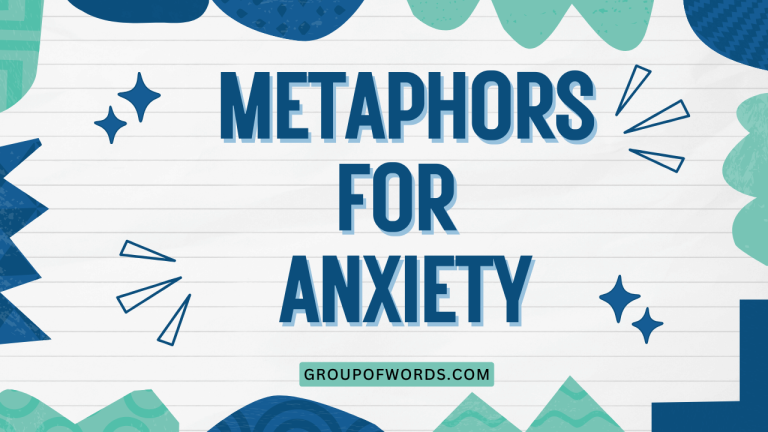Sunset Similes: A Grammatical Guide to Vivid Descriptions
Understanding how to use similes effectively can transform your writing from ordinary to extraordinary. Similes are powerful tools that allow you to draw comparisons between different things, creating vivid imagery and enhancing the reader’s experience.
This article focuses specifically on similes used to describe sunsets, offering a comprehensive guide to their structure, function, and usage. Whether you’re a student learning the basics of figurative language or a seasoned writer looking to refine your descriptive skills, this guide will provide you with the knowledge and practice you need to master the art of sunset similes.
This deep dive into sunset similes will not only improve your understanding of this specific type of figurative language but also enhance your overall command of English grammar and creative writing. From understanding the basic structure of a simile to exploring advanced techniques for crafting impactful comparisons, this article covers it all.
Get ready to paint breathtaking sunsets with your words!
Table of Contents
- Definition of a Simile
- Classification of Similes
- Function of Similes
- Contexts for Using Similes
- Structural Breakdown of Sunset Similes
- Key Components
- Common Structural Patterns
- Types of Sunset Similes
- Color-Based Similes
- Texture-Based Similes
- Emotion-Based Similes
- Object-Based Similes
- Examples of Sunset Similes
- Color Examples
- Texture Examples
- Emotion Examples
- Object Examples
- Usage Rules for Sunset Similes
- Clarity and Relevance
- Originality and Freshness
- Contextual Appropriateness
- Common Mistakes with Similes
- Avoiding Cliches
- Inaccurate Comparisons
- Overuse of Similes
- Practice Exercises
- Exercise 1: Completing the Simile
- Exercise 2: Identifying Effective Similes
- Exercise 3: Writing Your Own Similes
- Advanced Topics in Similes
- Extended Similes
- Simile vs. Metaphor
- Frequently Asked Questions
- Conclusion
Definition of a Simile
A simile is a figure of speech that directly compares two different things using the words “like” or “as.” It’s a fundamental tool in descriptive writing, allowing authors to create vivid images and convey complex ideas in a relatable manner. Similes help readers understand abstract concepts by associating them with more concrete or familiar ones.
Classification of Similes
Similes are classified as a type of figurative language, specifically under the umbrella of comparisons. They are distinct from metaphors, which imply a similarity without explicitly stating it.
Similes belong to a broader category that includes analogies and allegories, all of which involve drawing parallels between different subjects.
Function of Similes
The primary function of a simile is to enhance description. By comparing a subject to something else, writers can highlight specific qualities or characteristics.
Similes also serve to clarify meaning, evoke emotions, and add depth to writing. In the context of describing a sunset, similes can capture the vibrant colors, the ethereal atmosphere, and the feelings of awe and tranquility that sunsets often inspire.
Contexts for Using Similes
Similes are appropriate in a wide range of writing contexts, from poetry and fiction to essays and journalism. They are particularly effective in descriptive passages where the goal is to create a strong impression on the reader.
When describing a sunset, similes can be used in poems, short stories, travelogues, and even scientific reports to convey the beauty and complexity of this natural phenomenon. The key is to use similes judiciously and ensure they contribute to the overall tone and purpose of the writing.
Structural Breakdown of Sunset Similes
Understanding the structure of a simile is crucial for crafting effective and impactful comparisons. A typical simile consists of two main components: the subject being described (in this case, the sunset) and the object to which it is being compared.
These two elements are linked by the words “like” or “as,” which indicate the comparison.
Key Components
The key components of a sunset simile are the subject (the sunset), the linking word (“like” or “as”), and the object of comparison. For example, in the simile “The sunset was like a fiery painting,” the sunset is the subject, “like” is the linking word, and “a fiery painting” is the object of comparison. The object of comparison should share a relevant characteristic with the subject to create a meaningful connection.
Common Structural Patterns
There are several common structural patterns used in sunset similes. One common pattern is: Subject + Linking Word + Adjective + Noun (e.g., “The sunset was as vibrant as a tropical bird”). Another pattern is: Subject + Linking Word + Noun Phrase (e.g., “The sunset looked like a molten river”). Understanding these patterns can help you generate a variety of similes to describe sunsets in different ways.
Types of Sunset Similes
Sunset similes can be categorized based on the specific aspect of the sunset they emphasize. Common categories include color-based similes, texture-based similes, emotion-based similes, and object-based similes.
Each type offers a unique way to capture the essence of a sunset.
Color-Based Similes
Color-based similes focus on the vibrant hues of the sunset. They compare the colors of the sky to other colorful objects or phenomena.
These similes are particularly effective in capturing the visual beauty of a sunset.
Texture-Based Similes
Texture-based similes emphasize the appearance and feel of the sunset, such as its smoothness, roughness, or cloudiness. They often use comparisons to materials or surfaces with similar textures.
Emotion-Based Similes
Emotion-based similes convey the feelings or moods evoked by the sunset, such as peace, joy, or melancholy. They link the sunset to experiences or situations that elicit similar emotions.
Object-Based Similes
Object-based similes compare the sunset to specific objects, such as paintings, fires, or celestial bodies. These similes can create a strong visual image and add depth to the description.
Examples of Sunset Similes
To illustrate the different types of sunset similes, here are several examples organized by category. These examples demonstrate how similes can be used to create vivid and memorable descriptions of sunsets.
Color Examples
The following table showcases examples of color-based similes used to describe a sunset. Each simile highlights a specific color or combination of colors present in the sky during sunset, comparing it to familiar objects and scenes to create a vivid image for the reader.
| Simile | Explanation |
|---|---|
| The sunset was like a painter’s palette, splashed with hues of orange and pink. | Compares the sunset to a painter’s palette, emphasizing the variety and vibrancy of colors. |
| The sky burned as red as a blacksmith’s forge. | Uses the intense red of a forge to describe the fiery sunset. |
| The sunset glowed like molten gold. | Compares the sunset to molten gold, highlighting its radiant and shimmering quality. |
| The horizon was as purple as a field of lavender. | Uses the color of lavender to describe the soft, calming purple tones of the horizon. |
| The clouds were like cotton candy, spun with shades of rose and peach. | Compares the clouds to cotton candy, emphasizing their light and airy texture and delicate colors. |
| The setting sun looked like a blood orange bleeding into the night. | A more dramatic simile, comparing the sunset to a blood orange, emphasizing the deep red color. |
| The sky was as blue as a robin’s egg near the horizon. | Uses the specific shade of a robin’s egg to describe the blue hues in the sky. |
| Golden light spread like honey across the landscape. | Compares the golden light to honey, emphasizing its rich color and smooth, flowing movement. |
| The sunset’s colors were like a peacock’s feathers, iridescent and stunning. | Uses the iridescent colors of a peacock’s feathers to describe the complex and beautiful hues of the sunset. |
| The fiery hues of the sunset resembled a dragon’s breath. | A more fantastical simile, comparing the sunset to a dragon’s breath, emphasizing its intensity and warmth. |
| The sunset was as crimson as a ruby. | Compares the sunset to a ruby, emphasizing its deep red color and preciousness. |
| The sky looked like a watercolor painting, with soft washes of color. | Uses the imagery of a watercolor painting to describe the smooth, blended colors of the sunset. |
| The sunset’s orange was as bright as a jack-o’-lantern. | Compares the sunset to a jack-o’-lantern emphasizing the bright orange color. |
| The sky was as pink as a flamingo’s feathers. | Uses the color of a flamingo’s feathers to describe the pink hues in the sky. |
| The colors of the sunset were like a rainbow melting into the horizon. | Compares the sunset to a rainbow, emphasizing the variety and blending of colors. |
| The setting sun looked like a ripe mango, dripping with golden light. | Compares the sunset to a ripe mango, emphasizing the golden color and richness. |
| The sunset’s glow was as warm as amber. | Uses the color of amber to describe the warm glow of the sunset. |
| The sunset was like a kaleidoscope, shifting through endless shades of color. | Compares the sunset to a kaleidoscope, emphasizing the ever-changing colors. |
| The sky was as vibrant as a coral reef. | Uses the vibrant colors of a coral reef to describe the intense hues of the sunset. |
| The sunset’s colors were like a spilled box of crayons. | A playful simile, comparing the sunset to a spilled box of crayons, emphasizing the variety of colors. |
| The sunset was as scarlet as a poppy field. | Compares the sunset to a poppy field, emphasizing its deep red color. |
| The sky looked like a fiery opal, with shifting colors. | Uses the imagery of an opal to describe the shifting, iridescent colors of the sunset. |
| The sunset’s orange was as intense as a bonfire. | Compares the sunset to a bonfire emphasizing the intense orange color. |
| The sky was as lavender as twilight. | Uses the color of twilight to describe the lavender hues in the sky. |
| The colors of the sunset were like a stained glass window, glowing with light. | Compares the sunset to a stained glass window, emphasizing the glowing and intricate colors. |
| The setting sun looked like a burning ember, fading into the night. | Compares the sunset to a burning ember, emphasizing the fading light. |
| The sunset’s glow was as soft as rose quartz. | Uses the color of rose quartz to describe the soft glow of the sunset. |
| The sunset was like a painter’s masterpiece, crafted with delicate brushstrokes of color. | Compares the sunset to a painter’s masterpiece, emphasizing the delicate colors. |
| The sky was as brilliant as a gem. | Uses the brilliant colors of a gem to describe the intense hues of the sunset. |
| The sunset’s colors were like a box of exotic spices, rich and varied. | A playful simile, comparing the sunset to a box of exotic spices, emphasizing the variety of colors. |
Texture Examples
The following table showcases examples of texture-based similes used to describe a sunset. These similes focus on the visual and tactile qualities of the sunset, comparing it to materials and surfaces to create a more sensory experience for the reader.
| Simile | Explanation |
|---|---|
| The clouds were like brushstrokes of velvet across the sky. | Compares the clouds to velvet, emphasizing their smooth and soft texture. |
| The sunset was as smooth as silk, draping over the horizon. | Uses the smoothness of silk to describe the gentle transition of colors in the sunset. |
| The light filtered through the clouds like gauze, softening the edges of the day. | Compares the light to gauze, highlighting its delicate and filtering quality. |
| The sky felt like a warm blanket of color, enveloping the world. | Uses the image of a warm blanket to describe the comforting and enveloping feeling of the sunset. |
| The clouds were like crumbled paper, scattered across the canvas of the sky. | Compares the clouds to crumbled paper, emphasizing their irregular and textured appearance. |
| The sunset looked like liquid fire, slowly cooling into the night. | A more dramatic simile, comparing the sunset to liquid fire, emphasizing its flowing and intense nature. |
| The sky was as rough as sandpaper near the storm clouds. | Uses the roughness of sandpaper to describe the turbulent texture of the sky near storm clouds. |
| Golden light spread like a soft, warm fleece. | Compares the golden light to fleece, emphasizing its softness and warmth. |
| The sunset’s colors were like layers of chiffon, light and airy. | Uses the image of chiffon to describe the delicate and layered appearance of the sunset’s colors. |
| The fiery hues of the sunset resembled molten metal, cooling in the air. | A more industrial simile, comparing the sunset to molten metal, emphasizing its intensity and transformation. |
| The sunset was as textured as a tapestry. | Compares the sunset to a tapestry, emphasizing its intricate and layered texture. |
| The sky looked like a sheet of hammered gold, reflecting the last light of day. | Uses the image of hammered gold to describe the textured and reflective surface of the sky. |
| The sunset’s orange was as thick as molasses. | Compares the sunset to molasses emphasizing the thick texture. |
| The sky was as wispy as cotton candy. | Uses the wispy texture of cotton candy to describe the clouds in the sky. |
| The colors of the sunset were like watercolors on wet paper, blending seamlessly. | Compares the sunset to watercolors, emphasizing the blended and fluid texture. |
| The setting sun looked like a cracked glaze on pottery, revealing hidden colors. | Compares the sunset to a cracked glaze, emphasizing the texture and hidden colors. |
| The sunset’s glow was as hazy as a dream. | Uses the hazy texture of a dream to describe the sunset’s glow. |
| The sunset was like a mosaic, pieced together with fragments of color. | Compares the sunset to a mosaic, emphasizing the texture and fragments of color. |
| The sky was as layered as pastry dough. | Uses the layered texture of pastry dough to describe the intense hues of the sunset. |
| The sunset’s colors were like a velvet curtain. | A simile, comparing the sunset to a velvet curtain, emphasizing the texture. |
| The sunset was as shimmering as satin. | Compares the sunset to satin, emphasizing its smooth and radiant texture. |
| The sky looked like a brushed metal, with subtle variations in tone. | Uses the imagery of brushed metal to describe the subtle variations in tone of the sunset. |
| The sunset’s orange was as soft as cashmere. | Compares the sunset to cashmere emphasizing the soft texture. |
| The sky was as fluffy as meringue. | Uses the fluffy texture of meringue to describe the clouds in the sky. |
| The colors of the sunset were like blended silk. | Compares the sunset to blended silk, emphasizing the blending of colors. |
| The setting sun looked like a faded denim. | Compares the sunset to a faded denim, emphasizing the fading light. |
| The sunset’s glow was as delicate as lace. | Uses the delicate texture of lace to describe the sunset’s glow. |
| The sunset was like an impressionist painting. | Compares the sunset to an impressionist painting, emphasizing the texture. |
| The sky was as smooth as glass. | Uses the smooth texture of glass to describe the intense hues of the sunset. |
| The sunset’s colors were like a swirl of oil on water. | A simile, comparing the sunset to a swirl of oil on water, emphasizing the texture. |
Emotion Examples
The following table showcases examples of emotion-based similes used to describe a sunset. These similes focus on the feelings and moods evoked by the sunset, comparing it to experiences and situations that elicit similar emotions to create a more personal and evocative image for the reader.
| Simile | Explanation |
|---|---|
| Watching the sunset was like finding a moment of peace in a chaotic day. | Compares the experience of watching the sunset to finding peace, emphasizing its calming effect. |
| The sunset felt as hopeful as the start of a new adventure. | Uses the feeling of hope to describe the optimistic and forward-looking quality of the sunset. |
| The colors of the sunset were as comforting as a warm embrace. | Compares the colors to a warm embrace, highlighting their soothing and comforting effect. |
| The sunset felt like a gentle reminder to appreciate the beauty of life. | Uses the feeling of appreciation to describe the reflective and mindful quality of the sunset. |
| The fading light was as melancholic as a farewell. | Compares the fading light to a farewell, emphasizing its sense of sadness and parting. |
| The sunset felt like a quiet promise of a better tomorrow. | A hopeful simile, comparing the sunset to a promise, emphasizing its optimistic outlook. |
| The colors of the sunset were as joyful as a child’s laughter. | Uses the feeling of joy to describe the vibrant and uplifting quality of the sunset. |
| Watching the sunset was like reliving a cherished memory. | Compares the experience of watching the sunset to reliving a memory, emphasizing its emotional depth. |
| The sunset felt as serene as a quiet meditation. | Uses the feeling of serenity to describe the peaceful and calming quality of the sunset. |
| The fading light resembled the gentle closure of a chapter in life. | A more reflective simile, comparing the sunset to a closing chapter, emphasizing its sense of completion. |
| The sunset was as awe-inspiring as a grand symphony. | Compares the sunset to a symphony, emphasizing its grandeur and emotional impact. |
| The sky felt like a canvas of emotions, painted with shades of joy and sorrow. | Uses the image of a canvas to describe the range of emotions evoked by the sunset. |
| The sunset’s beauty was as captivating as a love song. | Compares the sunset to a love song emphasizing the captivating beauty. |
| The sky was as tranquil as a sleeping sea. | Uses the feeling of tranquility to describe the serene quality of the sky. |
| The colors of the sunset were like a beacon of hope in a dark world. | Compares the sunset to a beacon, emphasizing its inspiring and uplifting quality. |
| The setting sun felt like a warm hand on a cold day. | Compares the sunset to a warm hand, emphasizing its comforting and reassuring presence. |
| The sunset’s glow was as nostalgic as an old photograph. | Uses the feeling of nostalgia to describe the reflective and sentimental quality of the sunset. |
| Watching the sunset was like reading a beautiful poem. | Compares the experience of watching the sunset to reading a poem, emphasizing its artistic and emotional depth. |
| The sunset felt as liberating as a bird taking flight. | Uses the feeling of liberation to describe the freeing and uplifting quality of the sunset. |
| The fading light resembled a gentle sigh of contentment. | A more subtle simile, comparing the sunset to a sigh, emphasizing its sense of peace and satisfaction. |
| The sunset was as breathtaking as a mountain vista. | Compares the sunset to a mountain vista, emphasizing its stunning beauty. |
| The sky felt like a theater of emotions, playing out a drama of light and color. | Uses the image of a theater to describe the dynamic and emotional display of the sunset. |
| The sunset’s beauty was as inspiring as a work of art. | Compares the sunset to art, emphasizing the inspiring beauty. |
| The sky was as peaceful as a still lake. | Uses the feeling of peace to describe the serene quality of the sky. |
| The colors of the sunset were like a promise of renewal. | Compares the sunset to a promise, emphasizing the renewing quality. |
| The setting sun felt like a gentle reminder to slow down. | Compares the sunset to advice, emphasizing the importance of slowing down. |
| The sunset’s glow was as comforting as a mother’s embrace. | Uses the feeling of comfort to describe the comforting quality of the sunset. |
| Watching the sunset was like listening to a favorite song. | Compares the experience of watching the sunset to a favorite song, emphasizing its emotional depth. |
| The sunset felt as uplifting as a triumphant melody. | Uses the feeling of upliftment to describe the freeing and uplifting quality of the sunset. |
| The fading light resembled a gentle lullaby. | A more subtle simile, comparing the sunset to a lullaby, emphasizing its sense of peace and satisfaction. |
Object Examples
The following table showcases examples of object-based similes used to describe a sunset. These similes compare the sunset to specific objects, creating strong visual images and adding depth to the description.
These objects range from natural elements to man-made creations, each bringing a unique perspective to the portrayal of the sunset.
| Simile | Explanation |
|---|---|
| The sunset was like a celestial bonfire, burning away the day. | Compares the sunset to a bonfire, emphasizing its fiery intensity and transformative power. |
| The sky looked like a spilled glass of wine, staining the clouds with color. | Uses the image of spilled wine to describe the rich and saturated colors of the sunset. |
| The sunset was as vibrant as a tropical fruit platter. | Compares the sunset to a fruit platter, highlighting its variety and vibrancy of colors. |
| The horizon resembled a molten river of gold, flowing into the sea. | Uses the image of a molten river to describe the flowing and radiant quality of the sunset. |
| The clouds were like a fleet of ships sailing into the fiery sunset. | Compares the clouds to ships, adding a sense of movement and adventure to the scene. |
| The sunset felt like a warm blanket, wrapping the world in its embrace. | A comforting simile, comparing the sunset to a blanket, emphasizing its warmth and protection. |
| The colors of the sunset were like a kaleidoscope of jewels, shimmering in the sky. | Uses the image of a kaleidoscope to describe the shifting and brilliant colors of the sunset. |
| Watching the sunset was like attending a grand performance, the sky as the stage. | Compares the experience of watching the sunset to attending a performance, emphasizing its spectacle and drama. |
| The sunset was as peaceful as a still lake, reflecting the last light of day. | Uses the image of a still lake to describe the serene and reflective quality of the sunset. |
| The fading light resembled a page from a fairy tale, filled with magic and wonder. | A more whimsical simile, comparing the sunset to a fairy tale, emphasizing its sense of enchantment. |
| The sunset was as majestic as a royal procession. | Compares the sunset to a royal procession, emphasizing its grandeur and dignity. |
| The sky looked like a canvas painted by the gods, with brushstrokes of fire and gold. | Uses the image of a canvas to describe the artistic and divine quality of the sunset. |
| The sunset’s beauty was as captivating as a siren’s call. | Compares the sunset to a siren’s call emphasizing the captivating beauty. |
| The sky was as expansive as an endless ocean. | Uses the feeling of expansiveness to describe the serene quality of the sky. |
| The colors of the sunset were like a symphony of light. | Compares the sunset to a symphony, emphasizing the harmonious and uplifting quality. |
| The setting sun felt like a comforting hand on a cold day. | Compares the sunset to a hand, emphasizing the comforting and reassuring presence. |
| The sunset’s glow was as nostalgic as an old photograph. | Uses the feeling of nostalgia to describe the reflective and sentimental quality of the sunset. |
| Watching the sunset was like reading a beautiful poem. | Compares the experience of watching the sunset to reading a poem, emphasizing its artistic and emotional depth. |
| The sunset felt as liberating as a bird taking flight. | Uses the feeling of liberation to describe the freeing and uplifting quality of the sunset. |
| The fading light resembled a gentle sigh of contentment. | A more subtle simile, comparing the sunset to a sigh, emphasizing its sense of peace and satisfaction. |
| The sunset was as radiant as a lighthouse beam. | Compares the sunset to a lighthouse beam, emphasizing its guiding light. |
| The sky looked like a stained glass window. | Uses the imagery of a stained glass window to describe the radiant sunset. |
| The sunset’s beauty was as inspiring as a masterpiece. | Compares the sunset to a masterpiece, emphasizing the inspiring beauty. |
| The sky was as peaceful as a zen garden. | Uses the feeling of peace to describe the serene quality of the sky. |
| The colors of the sunset were like a painter’s palette. | Compares the sunset to a painter’s palette, emphasizing the variety of colors. |
| The setting sun felt like a warm fire. | Compares the sunset to a warm fire, emphasizing the warmth. |
| The sunset’s glow was as calming as a gentle stream. | Uses the feeling of calm to describe the calming quality of the sunset. |
| Watching the sunset was like a dream. | Compares the experience of watching the sunset to a dream, emphasizing its emotional depth. |
| The sunset felt as free as a soaring eagle. | Uses the feeling of freedom to describe the freeing and uplifting quality of the sunset. |
| The fading light resembled a gentle caress. | A more subtle simile, comparing the sunset to a caress, emphasizing its sense of peace and satisfaction. |
Usage Rules for Sunset Similes
While similes are a powerful tool for descriptive writing, it’s important to use them effectively. There are several rules to keep in mind when crafting sunset similes to ensure they are clear, original, and appropriate for the context.
Clarity and Relevance
A good simile should be clear and easy to understand. The comparison should be relevant and highlight a specific quality or characteristic of the sunset that you want to emphasize.
Avoid using obscure or confusing comparisons that may leave the reader puzzled.
Originality and Freshness
Strive for originality in your similes. Avoid using clichés or overused comparisons that have lost their impact.
Instead, try to come up with fresh and imaginative similes that will surprise and delight the reader. A unique simile can make your writing stand out and create a more lasting impression.
Contextual Appropriateness
Consider the context in which you are using the simile. The simile should be appropriate for the tone and style of your writing.
Avoid using overly dramatic or exaggerated similes in a formal or academic context. Similarly, a lighthearted or whimsical simile may not be suitable for a serious or somber piece.
Common Mistakes with Similes
Even experienced writers can make mistakes when using similes. Here are some common errors to avoid to ensure your similes are effective and well-crafted.
Avoiding Cliches
Cliches are overused similes that have lost their impact. Examples of clichéd similes for sunsets include “as red as a rose” or “like a painting.” These similes are generic and fail to create a fresh or memorable image.
Instead, strive for originality and come up with unique comparisons that will surprise and engage the reader.
Correct: “The sunset was like a fiery opal, shifting with colors unseen before.”
Incorrect: “The sunset was as beautiful as a painting.”
Inaccurate Comparisons
An inaccurate comparison occurs when the object of comparison does not share a relevant characteristic with the subject. For example, comparing a sunset to a refrigerator would be an inaccurate comparison because they have little in common.
Ensure that your similes are logical and that the comparison makes sense.
Correct: “The sunset was like molten gold, dripping across the horizon.”
Incorrect: “The sunset was like a brick wall.”
Overuse of Similes
While similes can enhance your writing, using too many can become distracting and detract from the overall impact. Use similes judiciously and only when they add something meaningful to your description.
Avoid overloading your writing with similes, as this can make it feel forced and unnatural.
Better: “The sunset painted the sky with hues of orange and pink, a fleeting masterpiece.”
Overuse: “The sunset was like a painting, as colorful as a rainbow, and as fleeting as a dream.”
Practice Exercises
To reinforce your understanding of sunset similes, here are some practice exercises. These exercises will help you identify effective similes, complete incomplete similes, and write your own original similes.
Exercise 1: Completing the Simile
Complete the following similes with an appropriate comparison related to sunsets.
| Question | Answer |
|---|---|
| The sunset was as vibrant as ______. | a tropical bird |
| The sky glowed like ______. | molten gold |
| The clouds drifted like ______. | brushstrokes of velvet |
| The sunset felt as peaceful as ______. | a quiet meditation |
| The horizon looked like ______. | a molten river |
Exercise 2: Identifying Effective Similes
Read the following sentences and identify the similes that are the most effective in describing a sunset. Explain why you think they are effective.
- The sunset was as red as a fire truck.
- The sunset was like a painter’s palette, splashed with hues of orange and pink.
- The sunset was as beautiful as a flower.
- The setting sun looked like a ripe mango, dripping with golden light.
- The sunset was as bright as the sun.
Answer:
The most effective similes are:
- “The sunset was like a painter’s palette, splashed with hues of orange and pink.” This simile is effective because it creates a vivid image of the variety and vibrancy of colors present in the sunset, comparing it to something familiar and artistic.
- “The setting sun looked like a ripe mango, dripping with golden light.” This simile is effective because it uses a unique and sensory comparison, evoking the golden color and richness of the sunset through the image of a ripe mango.
Exercise 3: Writing Your Own Similes
Write three original similes to describe a sunset. Try to use different types of comparisons (color-based, texture-based, emotion-based, and object-based) to create a variety of descriptions.
Answer: (Example)
- The sunset was as smooth as silk, draping over the horizon. (Texture-based)
- The sunset felt like a gentle reminder to appreciate the beauty of life. (Emotion-based)
- The sky looked like a spilled glass of wine, staining the clouds with color. (Object-based)
Advanced Topics in Similes
Once you have a solid understanding of the basics of similes, you can explore more advanced techniques to further enhance your writing. These techniques include using extended similes and understanding the distinction between similes and metaphors.
Extended Similes
An extended simile is a simile that is developed over several lines or sentences. It allows you to explore the comparison in greater detail and create a more complex and nuanced image.
Extended similes can be particularly effective in descriptive passages where you want to create a strong and lasting impression on the reader.
Example: “The sunset was like a painter’s masterpiece, crafted with delicate brushstrokes of color. The hues of orange and pink blended seamlessly, creating a breathtaking vista that stretched across the horizon. It was as if the sky itself was a canvas, and the setting sun was the artist’s final flourish.”
Simile vs. Metaphor
While similes and metaphors are both figures of speech that draw comparisons between different things, they do so in different ways. A simile uses the words “like” or “as” to make a direct comparison, while a metaphor implies a comparison without explicitly stating it.
Understanding the distinction between similes and metaphors is crucial for using figurative language effectively.
Simile: “The sunset was like a fiery painting.”
Metaphor: “The sunset was a fiery painting.”
Frequently Asked Questions
What is the difference between a simile and a metaphor?
A simile uses “like” or “as” to compare two things directly, while a metaphor implies a comparison without using these words. For example, “The sunset was like a painting” (simile) versus “The sunset was a painting” (metaphor).
How can I avoid using clichéd similes?
To avoid clichés, try to think of fresh and original comparisons that are specific to the subject you are describing. Instead of saying “as red as a rose,” try “as red as a blacksmith’s forge.”
Can I use multiple similes in one sentence?
While it’s possible to use multiple similes, it’s generally best to avoid doing so, as it can make your writing feel cluttered and forced. Focus on using one or two well-chosen similes that add the most impact.
How important is it to use similes when describing sunsets?
Using similes is not essential, but they can greatly enhance your description by creating vivid imagery and evoking emotions. They are a valuable tool for making your writing more engaging and memorable.
Are similes only useful for creative writing?
No, similes can be used in various types of writing, including descriptive essays, travelogues, and even scientific reports, to clarify meaning and add depth to your descriptions.
Conclusion
Mastering the art of sunset similes can significantly enhance your descriptive writing and allow you to create vivid and memorable images for your readers. By understanding the structure, function, and usage rules of similes, you can craft comparisons that are clear, original, and appropriate for the context.
Avoid common mistakes such as using clichés or inaccurate comparisons, and strive for originality and freshness in your writing. With practice and attention to detail, you can use sunset similes to transform your writing from ordinary to extraordinary.
